Abstract
The virulence of intracranially-inoculated mutant forms of an O18ac:K1:H7 ColV+ strain of Escherichia coli (designated MW) that lacked different combinations of its O and K antigens and ColV, and of an E. coli K12 strain to which these characters had been transmitted was studied in mice, chickens, ducks and guinea-pigs. The O18+K1+ColV+ form of MW was highly virulent for chickens and mice but the corresponding form of K12 was only highly virulent for chickens; the O18-K1-ColV- forms of both strains were of low virulence for chickens and mice. K1 was more important than O18 or ColV in determining virulence for both animal species. Ducks and guinea-pigs resembled chickens, not mice, in their response to infection with the O18+K1+ColV+form of K12. Pathogenesis studies revealed that the virulence of the forms of MW and K12 was associated with their ability to proliferate in the central nervous system; only low numbers of organisms were found in the blood and spleen of inoculated animals. The O18+K1+ColV+ form of K12 multiplied in mouse brain and in mouse blood in vitro; its multiplication in chicken blood was partially inhibited. Agglutinins to this and other forms of K12 were found in chicken serum but not in mouse serum. Large doses of mouse serum given to chickens and large doses of chicken serum given to mice did not alter the manner in which these animals responded to K12 O18+K1+ColV+ infection. Vaccination protected chickens and mice against lethal intracranial infection with the O18+K1+ColV+ forms of K12 or MW; it produced a much stronger immunity in mice against intraperitoneal challenge than against intracranial challenge.
Full text
PDF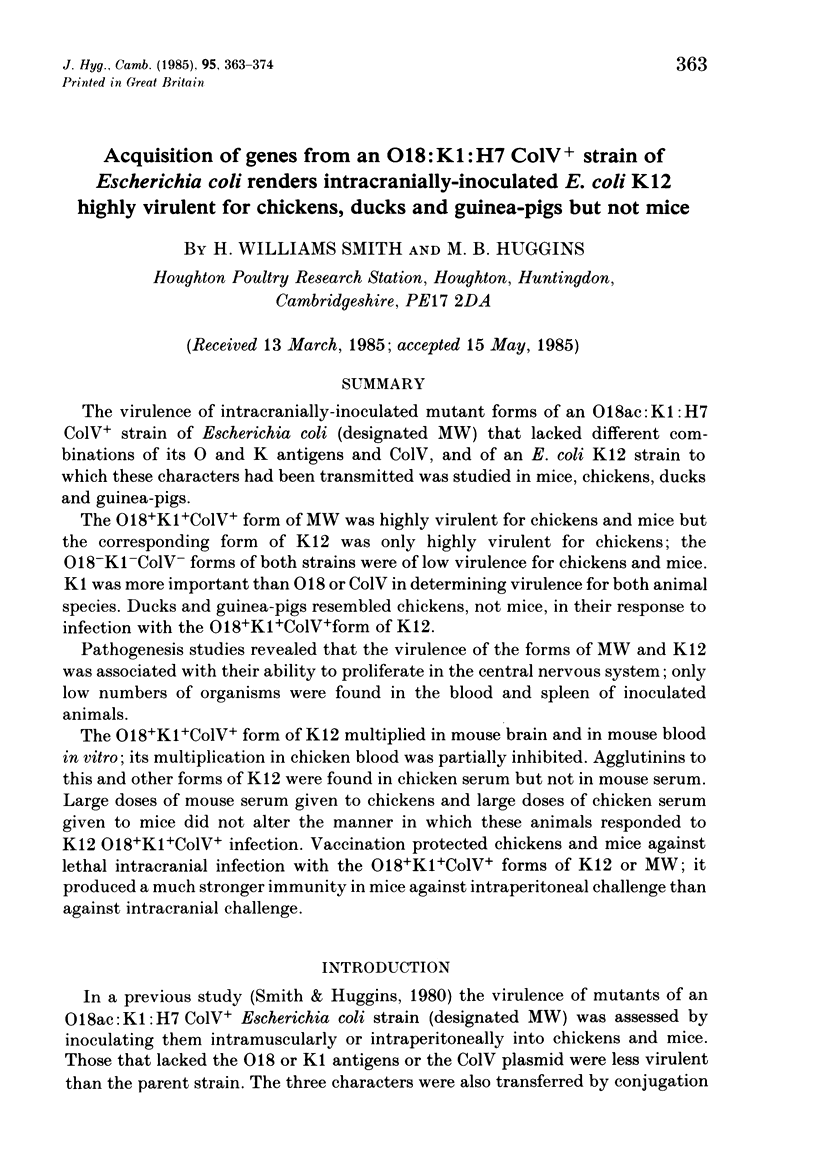

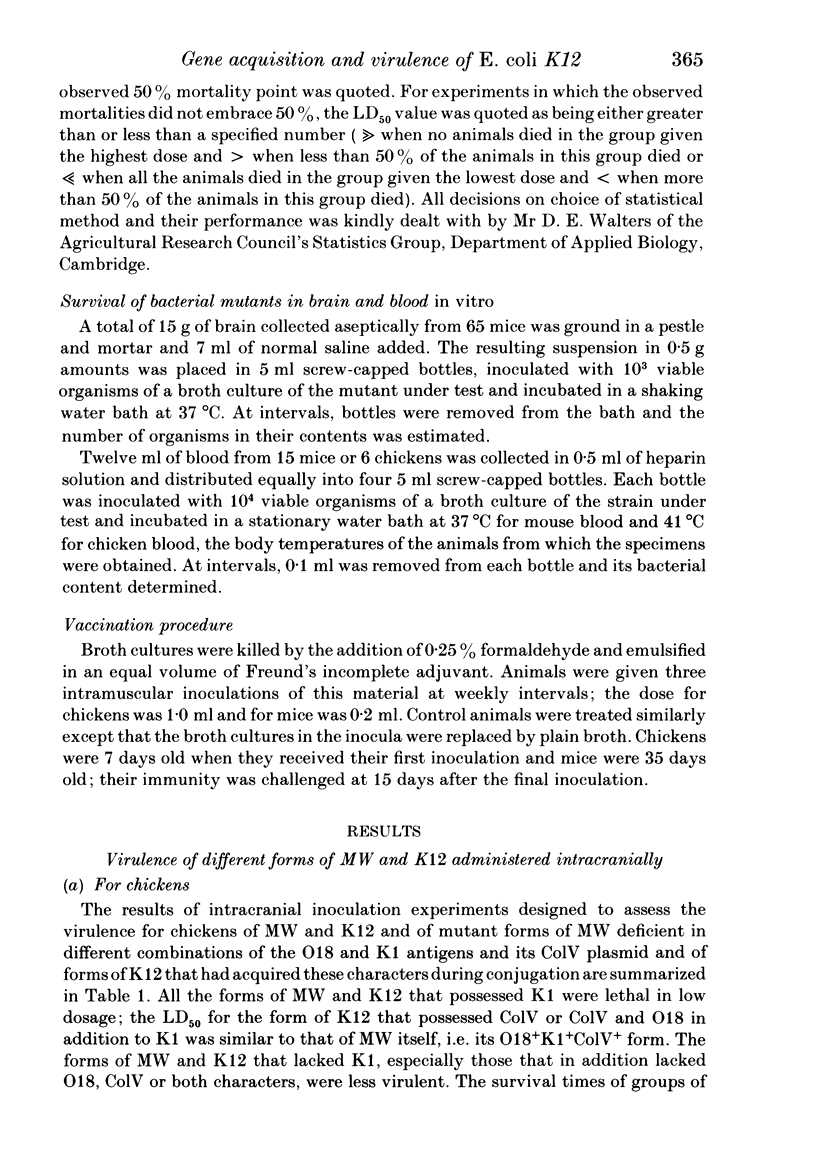
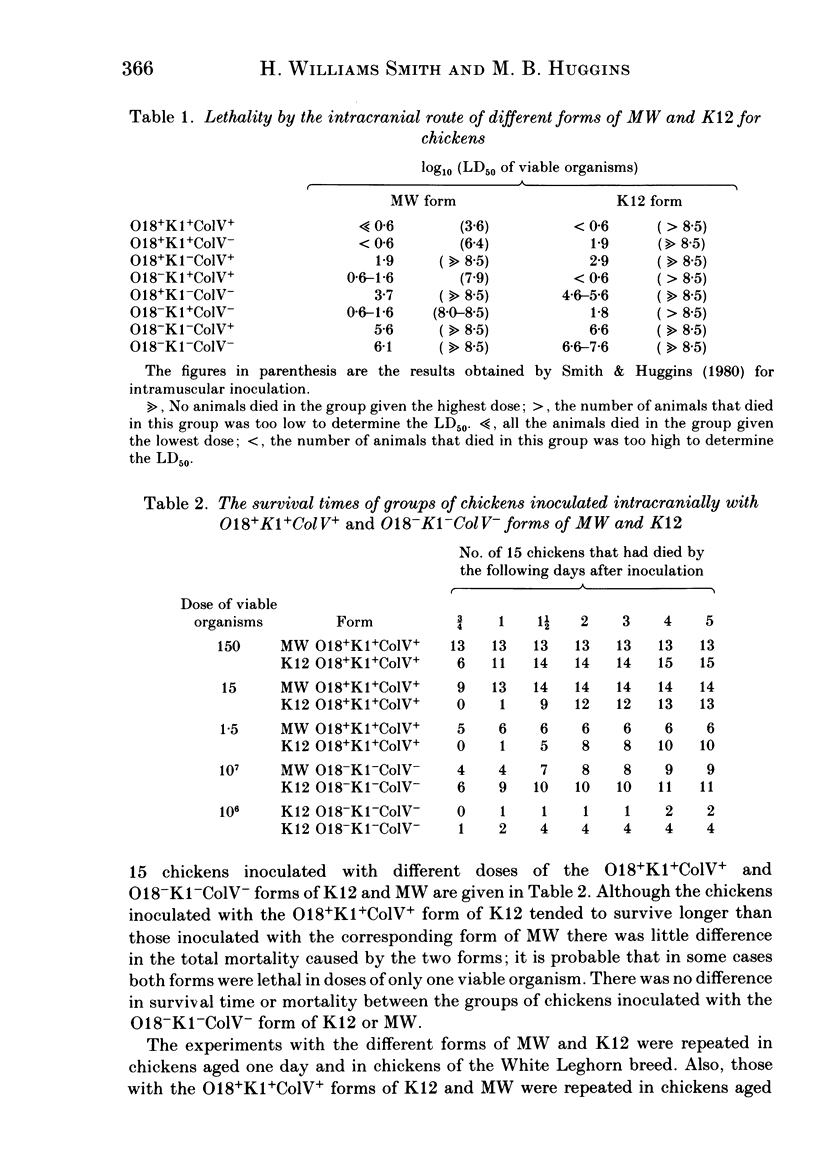

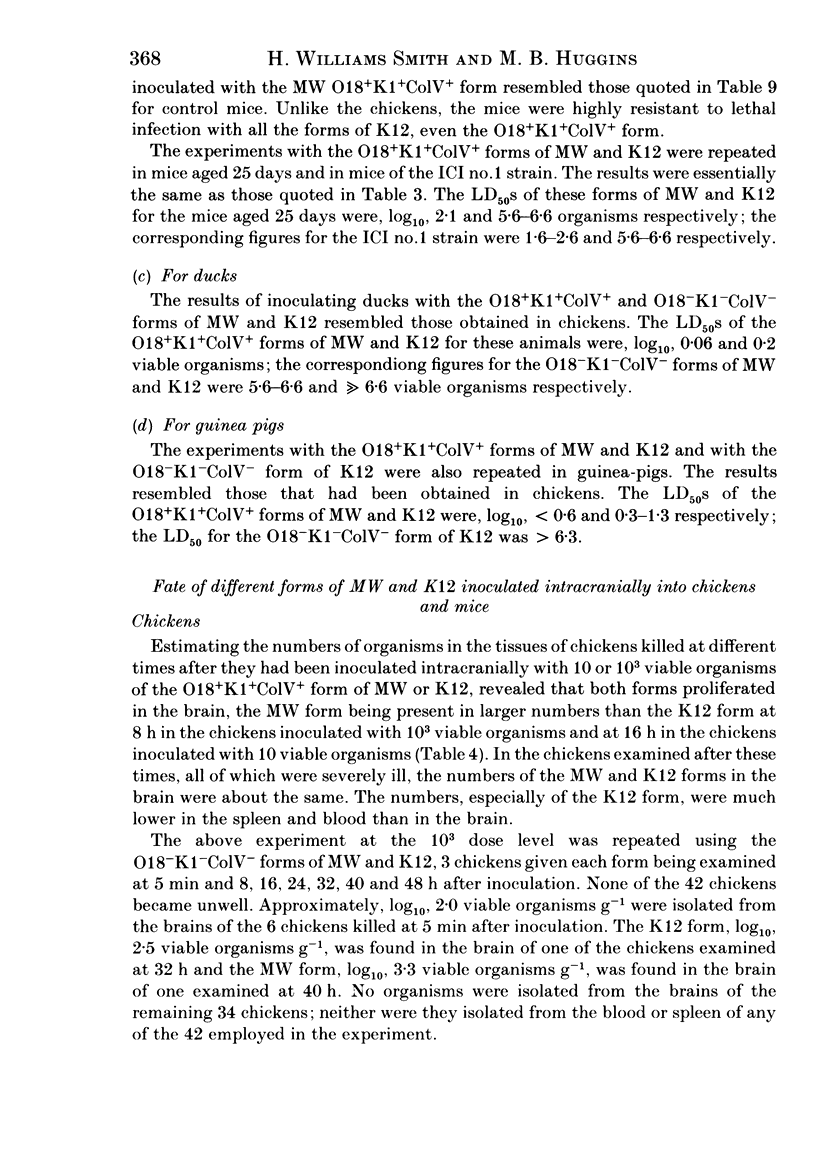
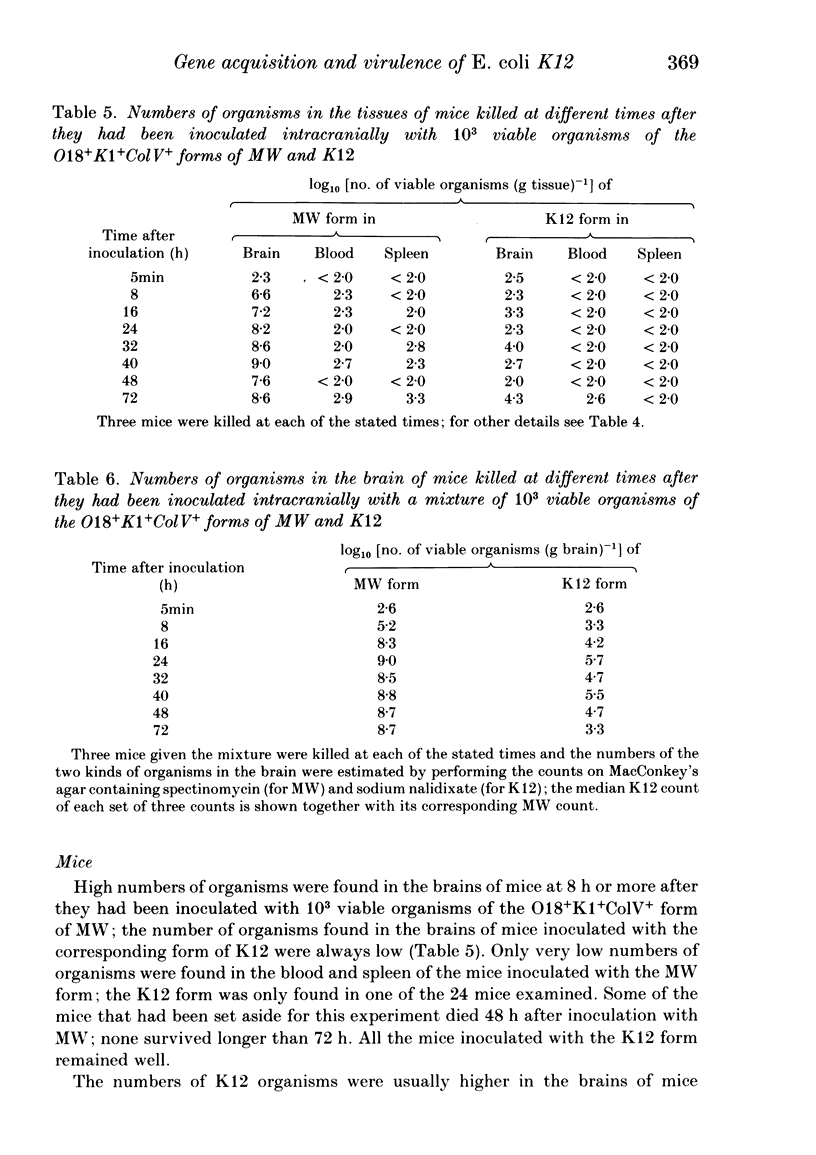


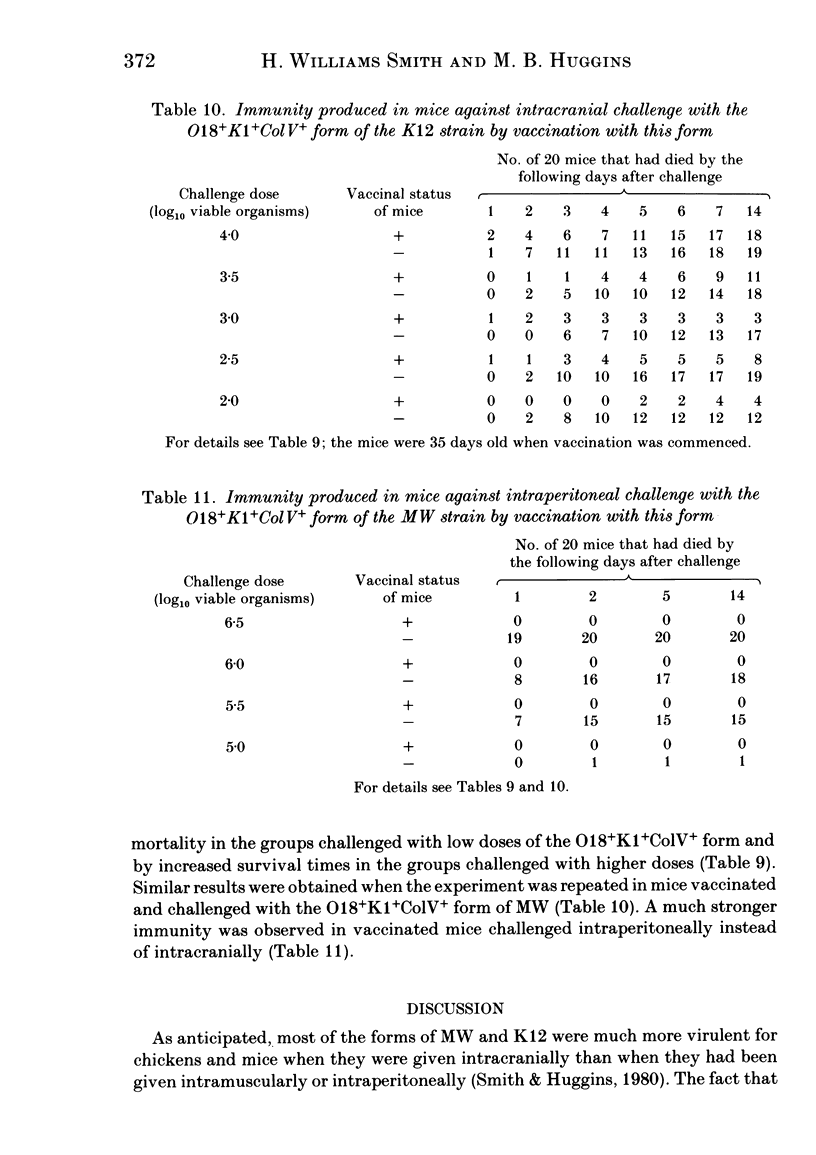

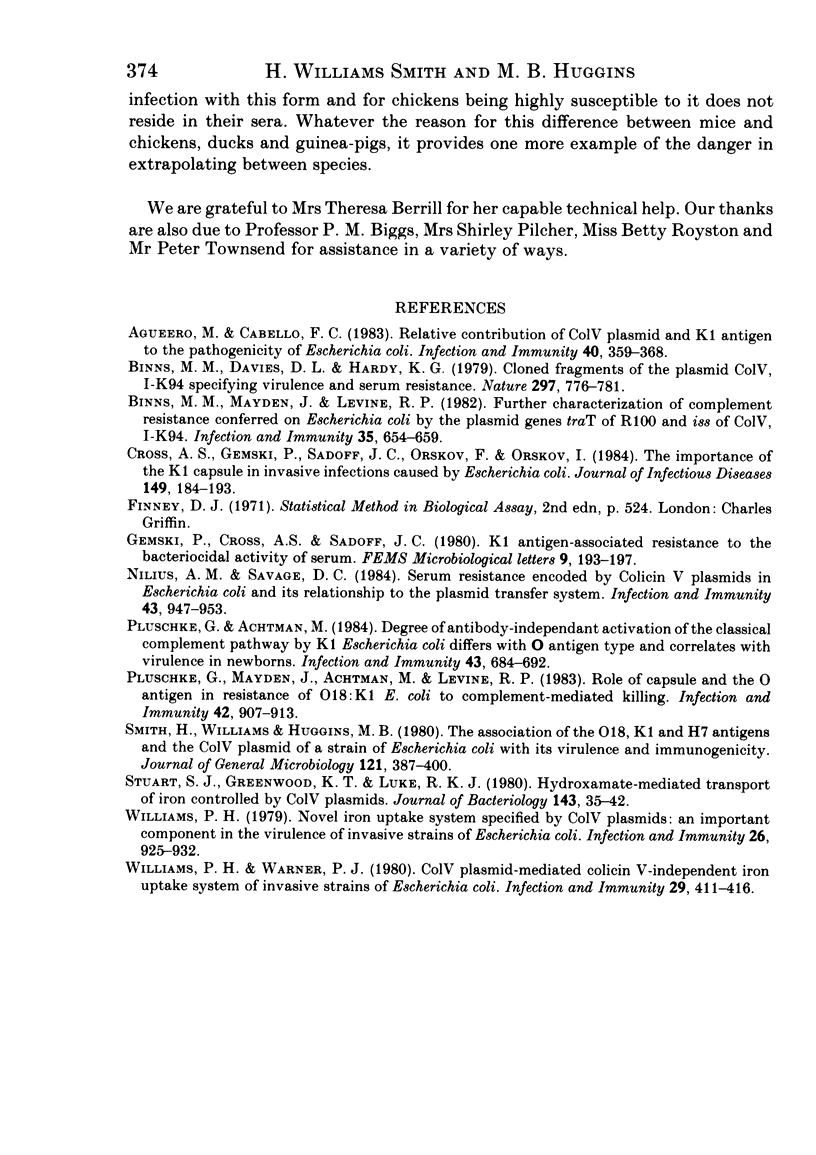
Selected References
These references are in PubMed. This may not be the complete list of references from this article.
- Agüero M. E., Cabello F. C. Relative contribution of ColV plasmid and K1 antigen to the pathogenicity of Escherichia coli. Infect Immun. 1983 Apr;40(1):359–368. doi: 10.1128/iai.40.1.359-368.1983. [DOI] [PMC free article] [PubMed] [Google Scholar]
- Binns M. M., Davies D. L., Hardy K. G. Cloned fragments of the plasmid ColV,I-K94 specifying virulence and serum resistance. Nature. 1979 Jun 28;279(5716):778–781. doi: 10.1038/279778a0. [DOI] [PubMed] [Google Scholar]
- Binns M. M., Mayden J., Levine R. P. Further characterization of complement resistance conferred on Escherichia coli by the plasmid genes traT of R100 and iss of ColV,I-K94. Infect Immun. 1982 Feb;35(2):654–659. doi: 10.1128/iai.35.2.654-659.1982. [DOI] [PMC free article] [PubMed] [Google Scholar]
- Cross A. S., Gemski P., Sadoff J. C., Orskov F., Orskov I. The importance of the K1 capsule in invasive infections caused by Escherichia coli. J Infect Dis. 1984 Feb;149(2):184–193. doi: 10.1093/infdis/149.2.184. [DOI] [PubMed] [Google Scholar]
- Nilius A. M., Savage D. C. Serum resistance encoded by colicin V plasmids in Escherichia coli and its relationship to the plasmid transfer system. Infect Immun. 1984 Mar;43(3):947–953. doi: 10.1128/iai.43.3.947-953.1984. [DOI] [PMC free article] [PubMed] [Google Scholar]
- Pluschke G., Achtman M. Degree of antibody-independent activation of the classical complement pathway by K1 Escherichia coli differs with O antigen type and correlates with virulence of meningitis in newborns. Infect Immun. 1984 Feb;43(2):684–692. doi: 10.1128/iai.43.2.684-692.1984. [DOI] [PMC free article] [PubMed] [Google Scholar]
- Pluschke G., Mayden J., Achtman M., Levine R. P. Role of the capsule and the O antigen in resistance of O18:K1 Escherichia coli to complement-mediated killing. Infect Immun. 1983 Dec;42(3):907–913. doi: 10.1128/iai.42.3.907-913.1983. [DOI] [PMC free article] [PubMed] [Google Scholar]
- Smith H. W., Huggins M. B. The association of the O18, K1 and H7 antigens and the Co1V plasmid of a strain of Escherichia coli with its virulence and immunogenicity. J Gen Microbiol. 1980 Dec;121(2):387–400. doi: 10.1099/00221287-121-2-387. [DOI] [PubMed] [Google Scholar]
- Stuart S. J., Greenwood K. T., Luke R. K. Hydroxamate-mediated transport of iron controlled by ColV plasmids. J Bacteriol. 1980 Jul;143(1):35–42. doi: 10.1128/jb.143.1.35-42.1980. [DOI] [PMC free article] [PubMed] [Google Scholar]
- Williams P. H. Novel iron uptake system specified by ColV plasmids: an important component in the virulence of invasive strains of Escherichia coli. Infect Immun. 1979 Dec;26(3):925–932. doi: 10.1128/iai.26.3.925-932.1979. [DOI] [PMC free article] [PubMed] [Google Scholar]
- Williams P. H., Warner P. J. ColV plasmid-mediated, colicin V-independent iron uptake system of invasive strains of Escherichia coli. Infect Immun. 1980 Aug;29(2):411–416. doi: 10.1128/iai.29.2.411-416.1980. [DOI] [PMC free article] [PubMed] [Google Scholar]


